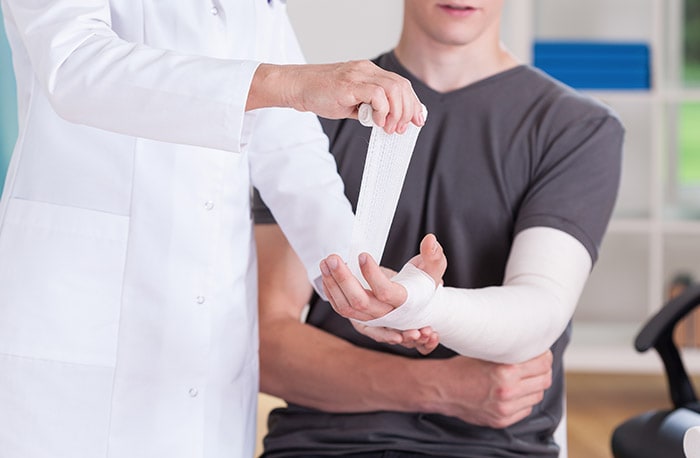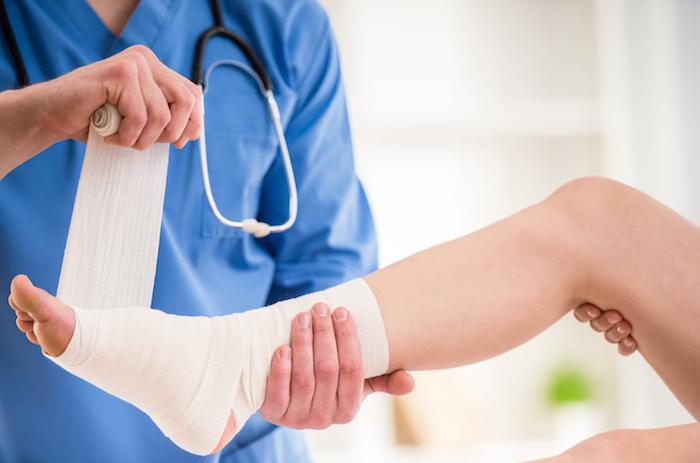Your body has an incredible ability to heal itself if given enough time. Skin cuts and wounds melt back into a smooth shell, leaving scars from burns, viruses, and bacteria clashing with powerful antibodies and broken bones knit together so your skeleton is as strong as they were before the injury.
Many individuals are unaware that there are many types of bone fractures, and each one necessitates a unique method of healing. Getting the right treatment is essential for a speedy recovery.
Our large team of orthopedic surgeons and sports medicine specialists at Specialty Care Clinics in Texas understand the intricacies of various fractures and use the most advanced technology available to diagnose and treat them. Here’s what you need to know about fractures.

IF BONE HEALS ON ITS OWN, WHY DO WE NEED TREATMENT?
It’s true that bones have a natural healing power, but it doesn’t always work without a little help. Depending on the type of fracture you have, you may need help to put the bone back in place, keep it stable during the healing process, and fight off infections.
Another reason to treat fractures quickly is to treat the cause of the fracture. For example, if you break a bone and the event that caused the injury cannot be determined, there may be an underlying condition, such as osteoporosis, which weakens the bone, or repeated stress that causes the bone to slowly break apart.
WHAT ARE THE TYPES OF FRACTURES?
Fractures can occur as a result of injury, disease, or even growth and developmental problems. Whatever the cause, it is the type of fracture that determines the type of fracture.
Stress fracture
Professional runners can develop stress fractures in their legs, hips, shins, and even their back. Constant pounding creates fine cracks in these bones.
Stress fractures do not usually need to put a cast on, but repetitive cross-training can be done by staying away, freezing, lifting, incorporating low-impact activities, and making sure technique and shoes are appropriate.
Growth plate fracture
As children grow, the ends of bones called growth plates become very soft and fragile. A simple fall can easily damage this vulnerable part of the limb and block further bone growth.
Partial/greenstick fracture
If you’ve ever tried snapping branches that are still green and fresh, you know why this type of snap is called greenstick snap. Branch-like bones only partially pierce, rather than completely piercing. We usually realign the bone and cast or splint it to make sure it stays still while it heals.
Stable (simple) fracture
When a bone is broken but the ends stay in place and do not need to be readjusted, it is called a simple or stable fracture.

Unstable fracture
Sometimes the fracture is so severe that two arms are bent at an angle. In this case, the bone must be manipulated and oriented back before it can be fixed. This may require surgery.
Compound fracture
Compound fractures, the worst of all fractures, are so severe that they pierce the skin. Not only are these types of fractures very painful, but they are also susceptible to infection.
THE RISK OF IGNORING A FRACTURE
If you choose to wait or do not seek treatment for your fracture, or if you receive the incorrect therapy for your kind of fracture, you may suffer the following complications :
- Nerves, muscles, or ligaments damage
- Deformity of the bones
- Problems with mobility
- Inflammation and joint stiffness
Compartment syndrome, which develops when pressure builds up in the muscles around your fracture, is another significant consequence of incorrectly treated fractures. If left untreated, this can result in reduced blood supply and permanent muscle damage, in addition to acute pain.
If you feel pain and swelling after an accident and fear you’ve broken a bone, call us immediately for a professional diagnosis and fracture treatment.
